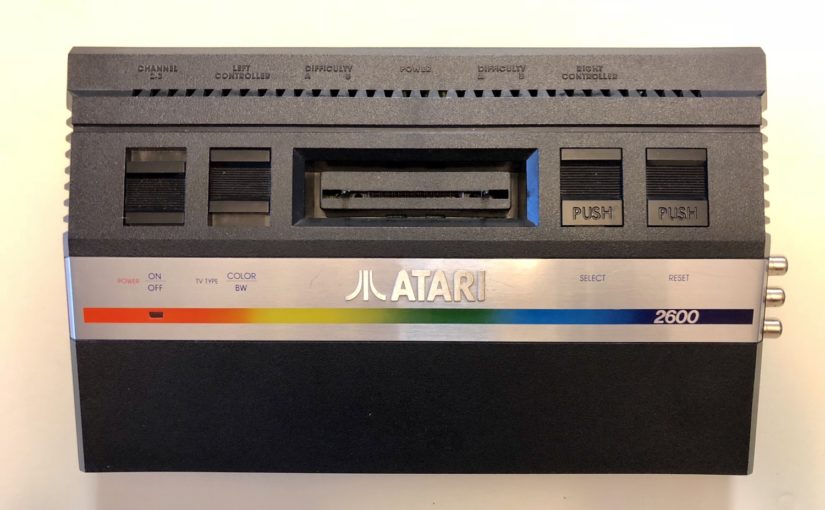Background
A couple of months ago, I wanted to modify my Atari 2600 jr so it could output to composite video. I wanted to use it with a Commodore 1702 monitor, which only has inputs for composite video and Luna/chroma but nothing for RF. The Atari, like many systems of that era, only had RF output for video. Since I am too chicken shit to modify my monitor (vacuum tubes! Stay away!!!) I decided to modify the Atari instead.
The finished modification is shown below.

There’s a ton of documentation online about the composite mod for the Atari 2600, and an online search will yield lots of information and instructions for the different variants of the 2600 that were produced (PAL vs. NTSC, 2600 vs. 2600 jr, etc. )
I was too lazy to make my own board for the mod (like really lazy), so I ended up just buying a kit from Retrofixes. The site also has decent instructions on how to install the kit, and it tells you which components need to be removed.
When I compared my board with all the boards displayed online, however, I noticed that my Atari 2600 jr had a non-standard board. And so, the instructions listed online for performing the composite mod didn’t really apply to my situation. Needless to say, I was a little confused at first. So what did I have?
Unicorn board
It turns out that my Atari 2600jr has a “JAN” or “Janice” single chip design. Normally, the 2600 has three main chips (CPU, TIA and RIOT), but my board had a single large chip which Incorporated the function of the three chips. People call this variant of the 2600 jr the “Unicorn” Atari (because it’s rare? I dunno…)
A schematic of the board is located here (schematic) and is discussed somewhat on an Atariage forum. Here’s a close-up of the board and the JAN chip:

You can see that there is an empty IC slot just above the main chip and below the cartridge slot. Apparently, this 1-chip pcb was originally designed to incorporate a built-in game ROM that loaded whenever the Atari was turned on without a cartridge (more on that later).
The Unicorn 2600jr may be rare but it is not entirely perfect; it looks like it may be incompatible with some games. Indeed, I noticed that there are issues when I try to play Space Instigators on my Atari. This is the video I get when I start the game:

Essentially, the game is unplayable if it’s loaded like this. I can get the game to load properly if I remove the cartridge repeatedly and restart the console a couple of times. As you can see, it works eventually:

From what I gathered, the 3-in-1 chip only featured mono sound, so there is no way to get stereo sound with this version of the 2600. That’s not a big deal for me, since my monitor only has input for mono sound.
Composite mod
To perform the composite mod for the Unicorn Atari 2600 jr, I removed the components on the board more or less as instructed here, and I referred to the schematic to see where the power, video and sound wires needed to be attached. I also got help from an independent observer (thanks Alma!) who pointed out that I soldered some cables incorrectly! Those schematics can be a little tricky to read. To tell you the truth I think I was just lucky with my guesstimation.

I removed the following components:
- Q4
- L6
- R17
- R23
- C44
I hooked up power (red cable) to the middle hole of Q4, video (yellow cable) to the top hole of R17, and I ground (black) to the ground railing of the board. I then drilled holes and installed the RCA jacks as instructed here. I put it all back together and tested it… Bouya! It worked! I even hooked it up to my flat screen TV:

Adding a game rom
Wait… There’s a spot for installing a game rom on the board? Well, then of course I want to make a modification for that!
I had two cartridges for Asteroids, so I disassembled one of them and desoldered the ROM chip from the board. It was a little tough getting that heat shield off the game board.

I desoldered the holes of the empty slot on the Atari, installed a socket, and placed the game ROM in the socket:

Now, whenever I turn on the Atari without a game cartridge, Asteroids gets loaded and runs. Woohoo! Of course, since I installed a socket, I can always replace the game with another if needed.

